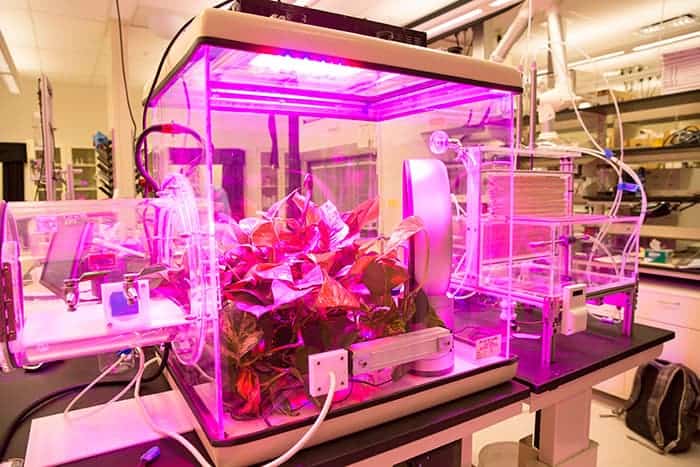
A report by the European Academies’ Science Advisory Council (EASAC) evaluates the potential contribution of negative emission technologies (NETs) for removing carbon dioxide (CO2) from the atmosphere, in order to help meet the Paris Agreement’s climate targets. It says that NETs have “limited realistic potential” to halt increases in the concentration of greenhouse gases in the air at the scale envisioned in the Intergovernmental Panel on Climate Change scenarios. Even taken together, NETs did not have the potential to deliver carbon removals at the 12 gigatonne (Gt) per annum (p.a.) scale and at the rate of deployment envisaged by the IPCC.
The EASAC report concluded that “scenarios and projections that suggest that NETs’ future contribution to CO2 removal will allow Paris targets to be met appear optimistic on the basis of current knowledge and should not form the basis of developing, analysing, and comparing scenarios of longer-term energy pathways for the EU. Relying on NETs to compensate for failures to adequately mitigate emissions may have serious implications for future generations”.
The options looked at include reforestation, afforestation, carbon-friendly agriculture, bioenergy with carbon capture and storage (BECCS), enhanced geo-chemical absorption, ocean fertilization, and direct air capture and carbon storage (DACCS), i.e. extraction of CO2 direct from the atmosphere using absorbents and then the separation and storage of CO2.
…the implication is that we need to accelerate renewables and energy efficiency, these surely being a better bet than trying to (re) bury carbon.
Dave Elliott
The IPCC had looked to BECCS in particular, suggesting, in one scenario, that it could capture up to 3.3 Gt of carbon p.a. But the land-use and eco-implications of that are huge and, like the other carbon capture options, it would take a long time to have an impact. What’s more, since CCS was not developing as fast as had been hoped – see below and my next post – the prospects of BECCS now looked limited. EASAC says: “The loss in momentum in implementing CCS technologies not only has serious implications for mitigation pathways, but also one of the most commonly cited NETs (BECCS) assumes the availability of cost-effective ’off-the shelf’ CCS, while another (direct air capture) relies on the widespread availability of CO2 storage”.
Although the potential of direct air capture was put at 3.3 Gt p.a, or more, it was, so far, undeveloped, with just two prototype projects. If it was to expand on a significant scale, EASAC asked, who would pay for it? Turning CO2 into a valuable fuel, the CCU (or DACCU) option, i.e. CO2 utilization rather than storage, might offset the cost, but EASAC does not look at that since it is not a carbon negative option – the resultant synfuels would be burnt, releasing CO2. However, the report does say that fossil CCS, although not carbon negative, could cut emissions by 4 Gt p.a. from fossil fuel-fired plants.
Afforestation and reforestation could capture up to 3.3 Gt and new farming practices and the use of biochar – made from biomass – to retain CO2 in soil could help (2–3 Gt p.a), but “we remain in an era where deforestation and soil degradation are continuing to add substantial quantities of GHGs [greenhouse gases].” So, though growing trees is cheap and better soil management techniques are available, making net positive carbon gains will be hard.

How to efficiently capture carbon dioxide out of thin air
Advanced geochemical “weathering” – adding carbonate or silicate minerals such as olivine and basalt to oceans and soils – has promise and may, EASAC says, offer 1 Gt C absorption p.a. Ocean fertilization with ferric compounds, to increase phyto-plankton productivity and CO2 absorption, could also capture perhaps up to 1 Gt p.a., if done on a vast scale, but that could have unknown, though potentially large ecological impacts.
So what’s the bottom line? Taken together, the EASAC report says, NETs and fossil fuel CCS might in theory eventually offer up to a total of around 12 Gt C capture p.a. but in practice nothing like this would be viable ecologically, quite apart from the economic costs. Even 10 Gt would be a very high maximum, given the technical limitations and land-use conflicts. And for the moment, CCS seems to be off the agenda and NETs look a long shot: trees apart, few of them exist beyond the R&D, test and/or prototype level and some are just concepts. John Shepherd at the University of Southampton, UK, an author of the report, said: “Negative emissions technologies are very interesting but they are not an alternative to deep and rapid emissions reductions. These remain the safest and most reliable option that we have.”
Moral hazard
All of which led the EASAC president Thierry Courvoisier to warn that: “Whether consciously or subconsciously, thinking that technology will come to the rescue if we fail to sufficiently mitigate may be an attractive vision. If such technologies are seen as a potential fail-safe or backup measure, they could influence priorities on shorter-term mitigation strategies, since the promise of future cost-effective removal technologies is politically more appealing than engaging in rapid and deep mitigation policies now. Placing an unrealistic expectation on such technologies could thus have irreversibly damaging consequences on future generations in the event of them failing to deliver. This would be a moral hazard which would be the antithesis of sustainable development.”
However, the EASAC report does accept that some of the technologies “can make some contributions to remove CO2 from the atmosphere even now, while research, development and demonstration may allow others to make a limited future contribution. We thus conclude it is appropriate to continue work to identify the best technologies and the conditions under which they can contribute to climate change mitigation, even though they should not be expected to play a major role in climate control at the present time.”
So, given the uncertainties with NETs and their likely significant impacts, it says that we have to strive as hard as possible to mitigate emissions, for example “through energy efficiency and energy saving by technical and regulatory measures, rapid deployment of renewable energies, land use management, reducing emissions of other GHGs etc.,” so as to meet emission reduction targets and to make any need for NETs more manageable.
The basic message of this study is thus that, in the main, we need to look elsewhere for a way to cut carbon. There are other options, nuclear being one, but given its problems, the implication is that we need to accelerate renewables and energy efficiency, these surely being a better bet than trying to (re)bury carbon.
Fossil CCS, although not carbon negative, is still being promoted by some. The Global CCS Institute says that “CCS is needed because the amount of fossil fuels we burn continues to rise”. It claims that “CCS is not a ‘front’ for the coal or wider fossil fuel industry” and sees CCS and renewables working together, although it also quotes some very low potential contributions for renewables.
However, renewables are booming while the prospects for CCS do not look good. There are just two coal CCS power station projects working at present, the $1bn Petra Nova project in Texas, US, and the $1.5bn Boundary Dam project in Canada. But, apart from the high cost, the final capture rates are low (33% in the case of Petra Nova) and energy requirement are high (25% of the plant’s output in the case of Boundary Dam). What’s more, the captured CO2 is being used for enhanced oil recovery (squeezing extra oil out of low-productivity oil wells), which means that, quite apart from any leaks, CO2 will be produced again when the oil is burnt. Full CCS, with the CO2 kept in geo-storage, would avoid that and could be carbon neutral, but as I will explore in my next post, CCS development work has all but halted, and although Australia has been looking at this idea, fossil CCS does not look likely to spread. With, as subsequent posts will describe in more detail, the various NETs, like BECCS and DAC, also mostly looking less than overwhelming, we may have to look elsewhere for solutions to our climate problems.



